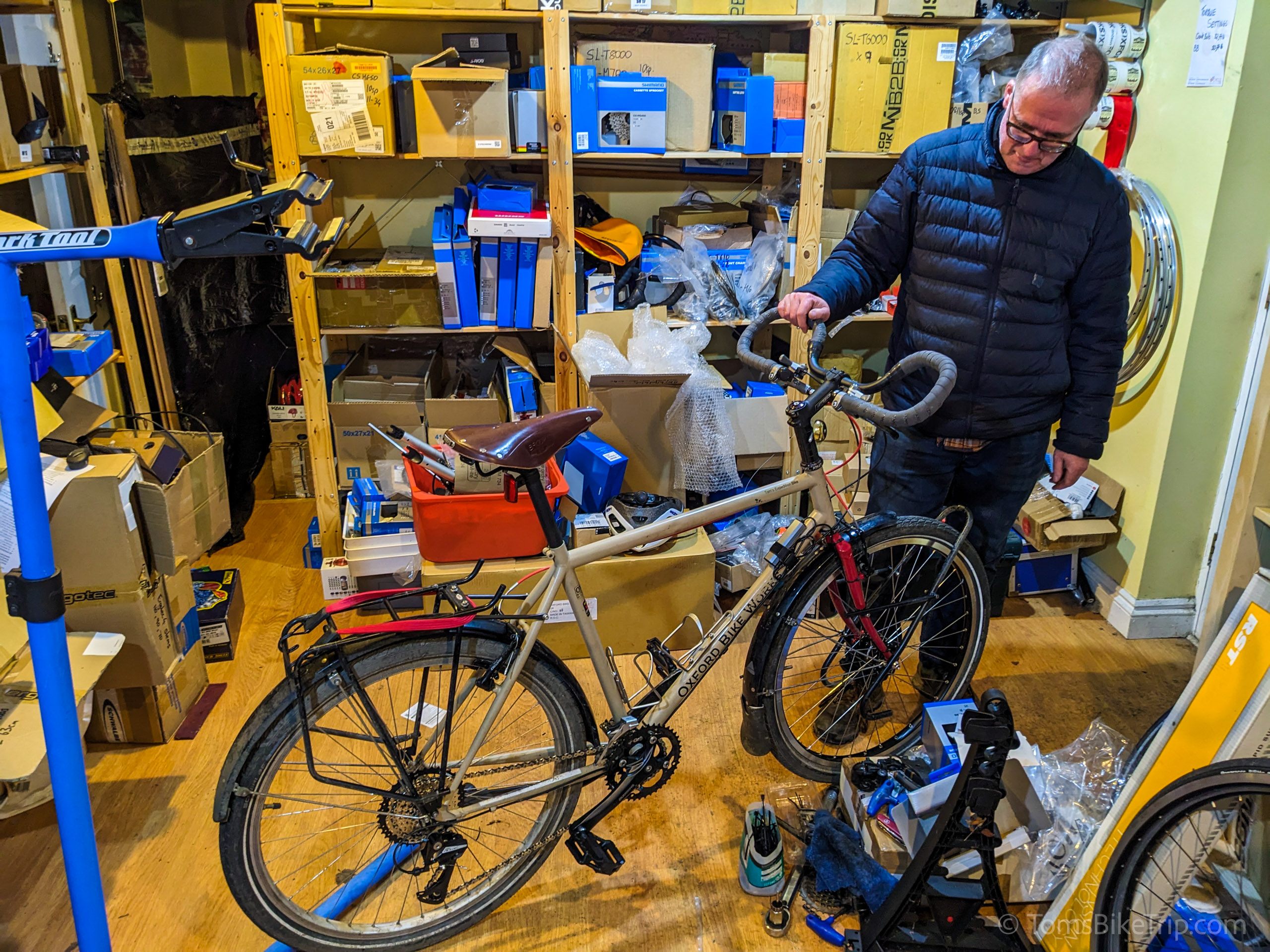The Ultimate Custom-Built Expedition Touring Bike: First Principles
For this project to be useful to as many people as possible, my task was not to design my ultimate expedition bike. That would only be useful to one person: me.
Instead, it was to find a balance of expedition touring bike design principles, distilling decades of thinking on the building and testing of round-the-world touring bikes into a baseline specification and set of build principles.
This could, in theory, be tweaked and customised each time the bike was built, in order to suit each individual rider, their needs, their preferences, and their fascinating ideas for making things unique.
Why take this approach? Well, some of the details of a touring bike should reflect personal preferences and riding styles – usually the choice of ‘fitting parts’ like saddles, grips and handlebars. There are also aesthetic decisions which add personality to a bike, such as frameset paint, component colour variations, and the like. Luggage systems are also much more diverse than they used to be, though a well-designed bike should be able to handle all of them.
But these are details. When you go back to basics, there’s a surprising amount of consensus on good design principles for a touring bike to take you round the planet.
And that’s because the only real test for a touring bike – custom-built or otherwise – is time and miles.
When the dust settles after a lap of the planet, looking at what worked and what didn’t makes a lot of the intellectualising you’ll find on internet forums feel a bit redundant.
One of my favourite stories is that of Adam Sultan, who crossed a continent and a half between 2016–2018 on one of these bikes.
Richard often shares his customers’ adventures on the Oxford Bike Works Facebook page. More stories from the saddle can be found on Instagram by searching for the #oxfordbikeworks hashtag.
A confession: this was actually the second time I’d built a bike for a round-the-world trip.
Way back in 2007, when I designed and built an expedition bike for my own round-the-world attempt, I made a few mistakes.
Sure, I knew how to use the tools and assemble all the components. But I was coming from a mountain-biking background, and with no touring experience, I didn’t understand the subtle needs of the long-distance travelling cyclist.
(This is something I’ve also found to be true of many a noble assistant in a high-street bike shop, which is why it’s best to hunt down a specialist).




I built and rebuilt my way through a parade of steel mountain-bike frames (including, if you’re interested, a Marin Rock Lobster, a Rocky Mountain Hammer, a Voodoo Bizango, an On-One Inbred and a Specialized Rockhopper) and component combinations before eventually settling on a Kona Explosif cromoly hardtail, which I finished building four days before setting off to try and cycle round the world.
By that point, however, I’d lost so much perspective that the result was an absolute monster:

(Incidentally, I did eventually rebuild the 2007 Kona Explosif frame into an off-road bikepacking rig – full details in another post.)
The second attempt was very different.
Why? Well, I had almost a decade of adventure cycle touring and bikepacking experience to go on, with all the daily maintenance, tweaking, repairing, rebuilding, and ever-growing wishlists of improvements I’d accumulated in that time.
I’d also spent a year as a volunteer bike mechanic for a charity who upcycled donated bikes for people in need of transport, during which time I’m pretty sure I fixed pretty much every kind of bicycle-related mechanical problem imaginable.
Plus, during the 9 years I’d been running this blog at the time, I’d also become acquainted with hundreds of other world bicycle travellers who’d shared what worked and what hadn’t regarding bicycles for expedition-grade journeys.
Finally, while researching other posts for this blog, I’d pored over the design concepts and specifications of every expedition touring bike built by every specialist manufacturer I could find the world over.
In other words, I’d done my riding – and my research.
Despite many attempts by readers of this blog to come up with an awesome name, the resulting bike became known simply as “Tom’s Expedition Bike”.
(That’s fine with me. I’ve always been of a utilitarian mindset.)
I’ll spare you the rest of the origin story – but if you’re really interested, you can read it in a separate blog post.



Something to add?